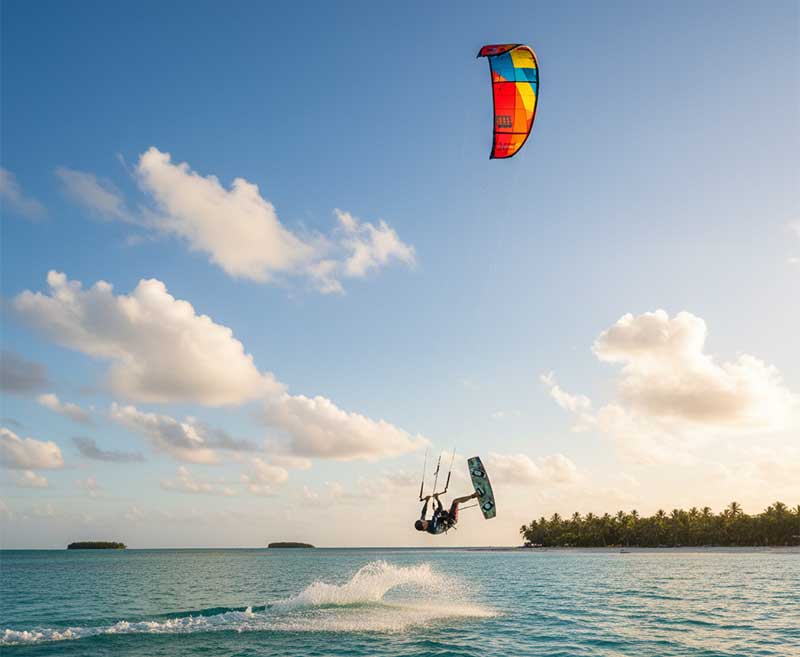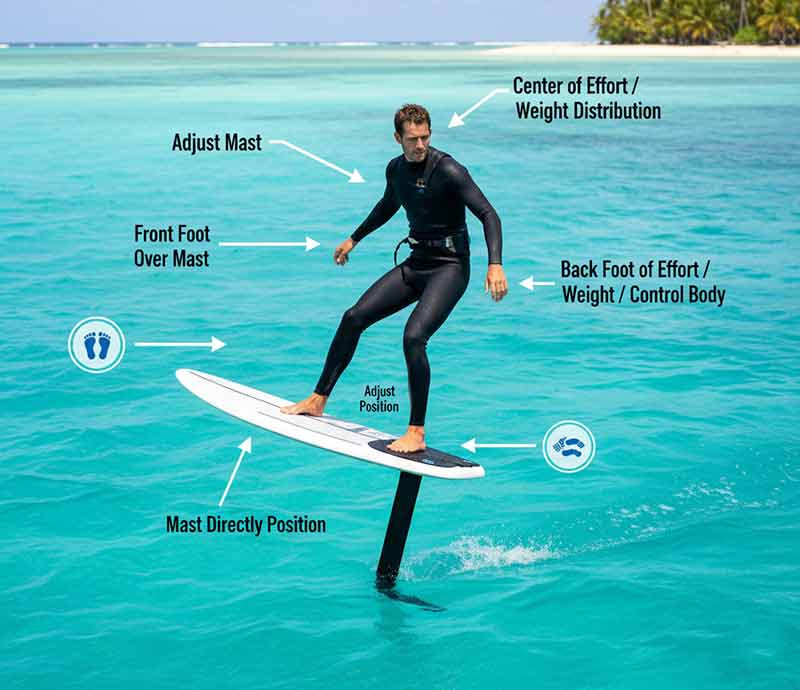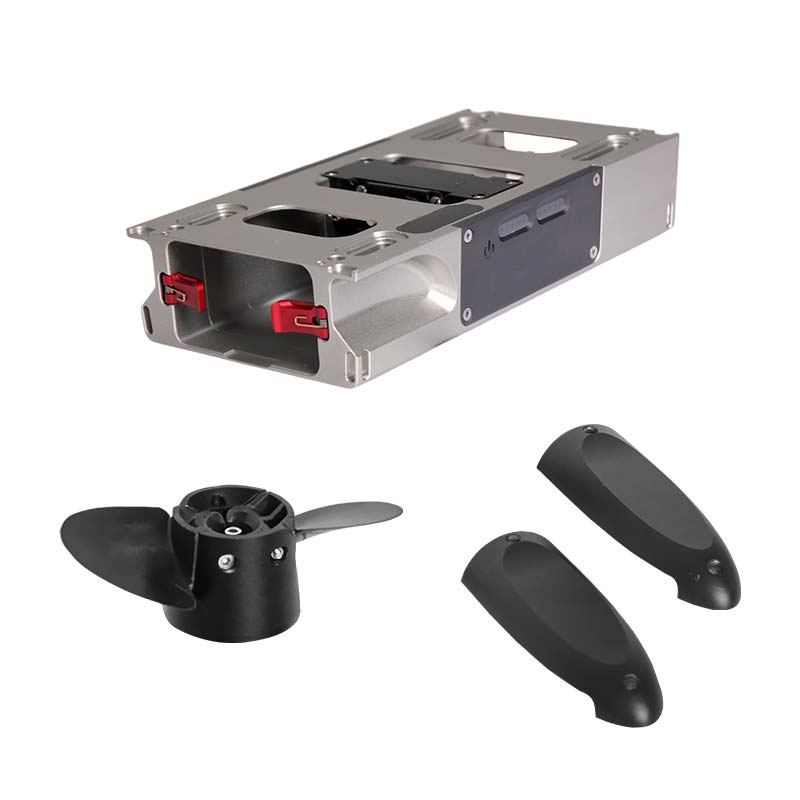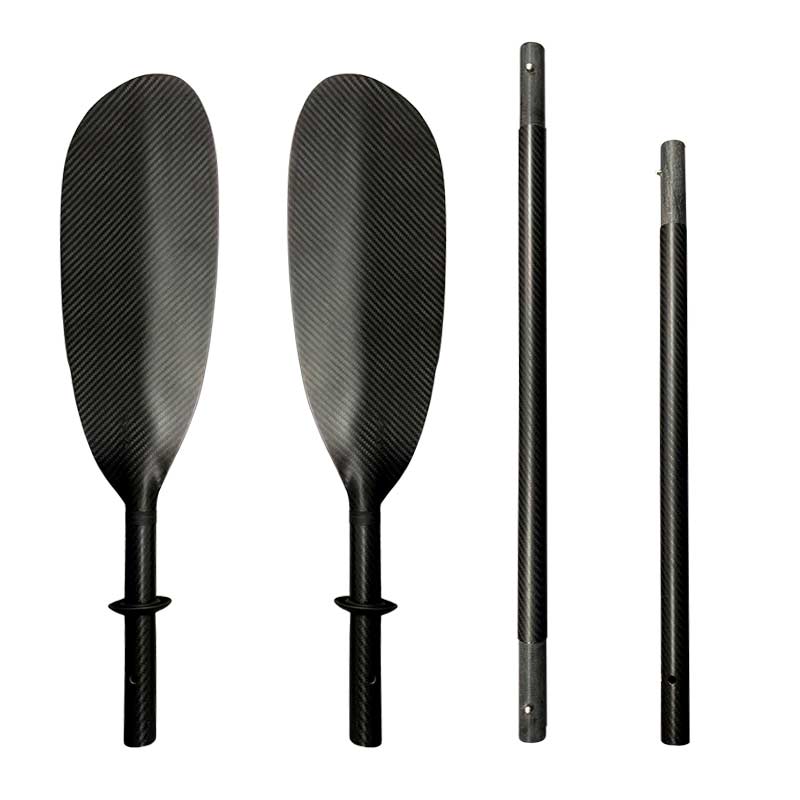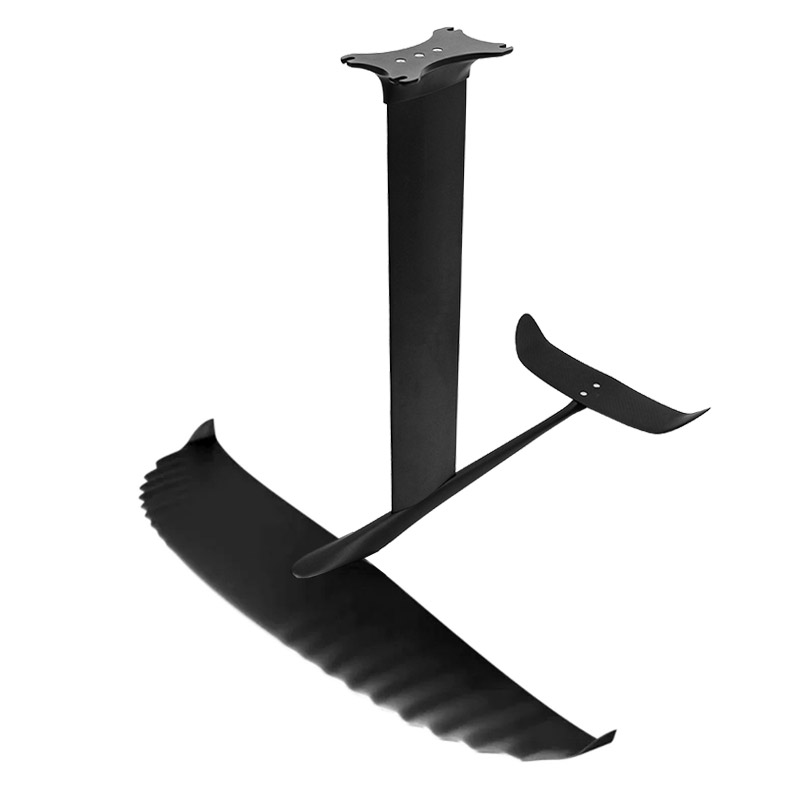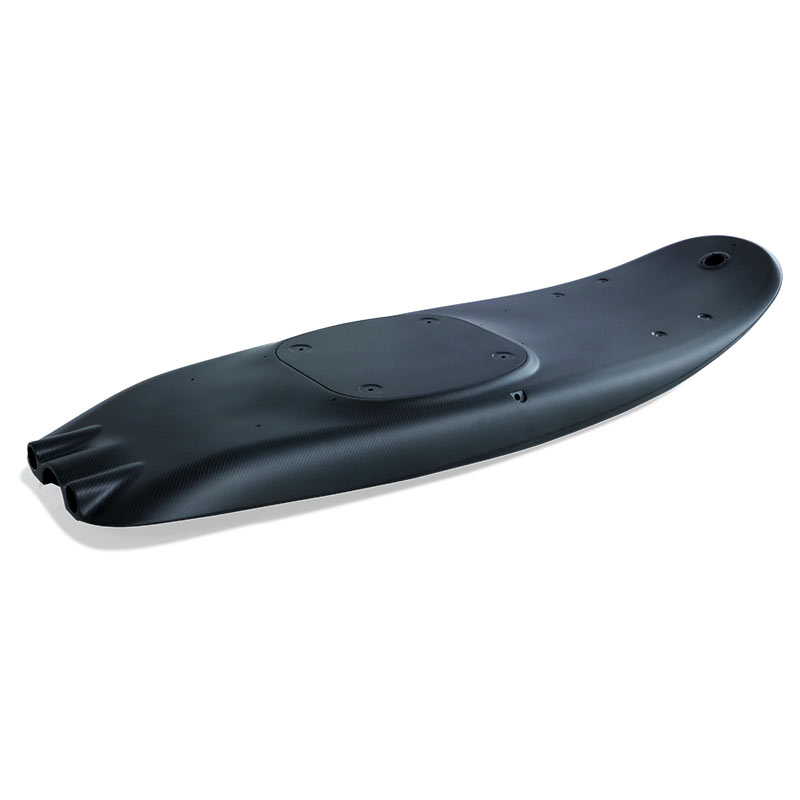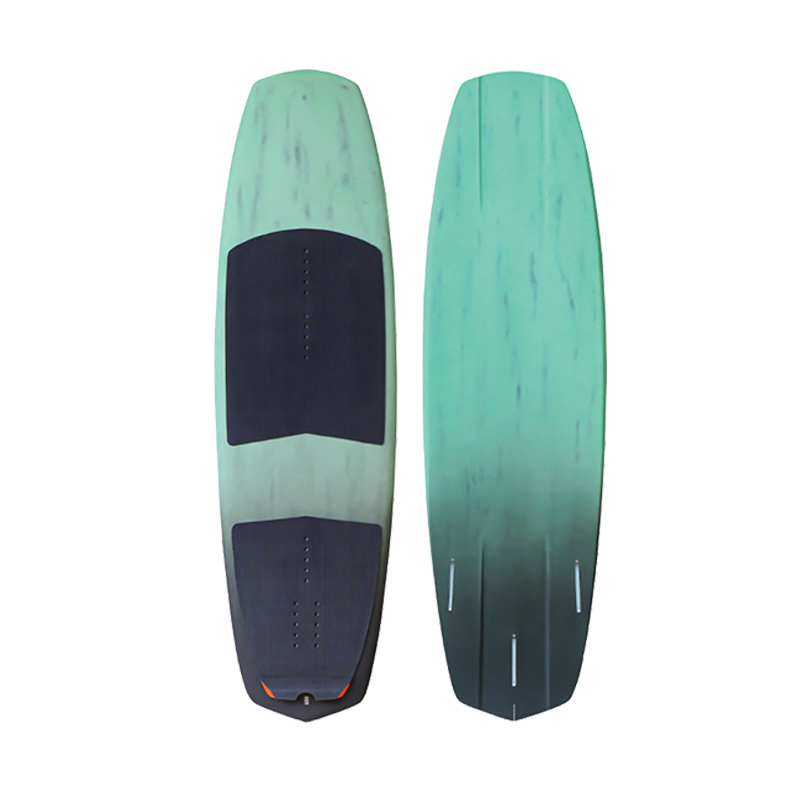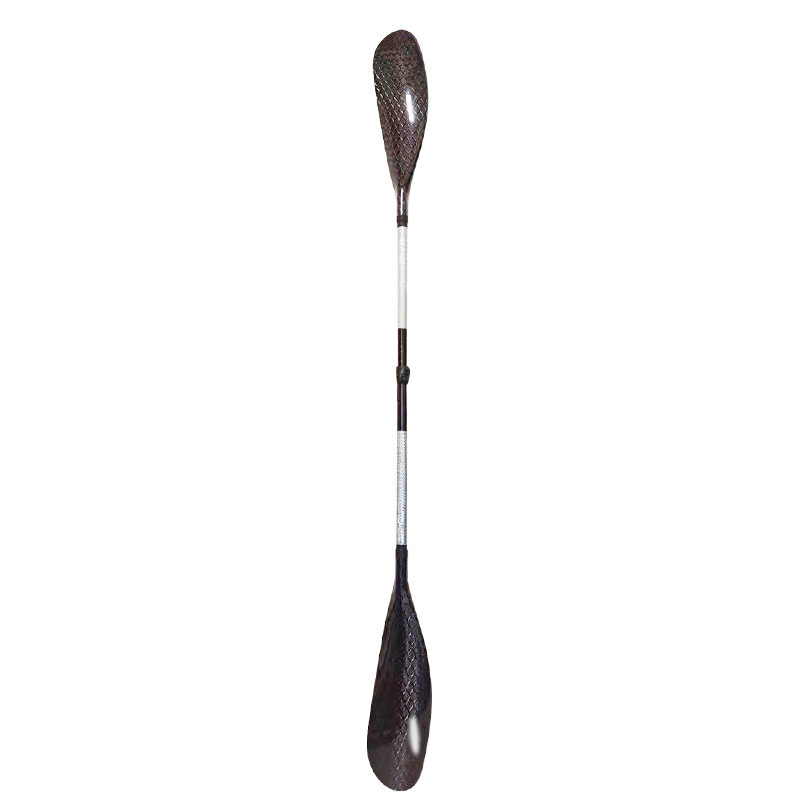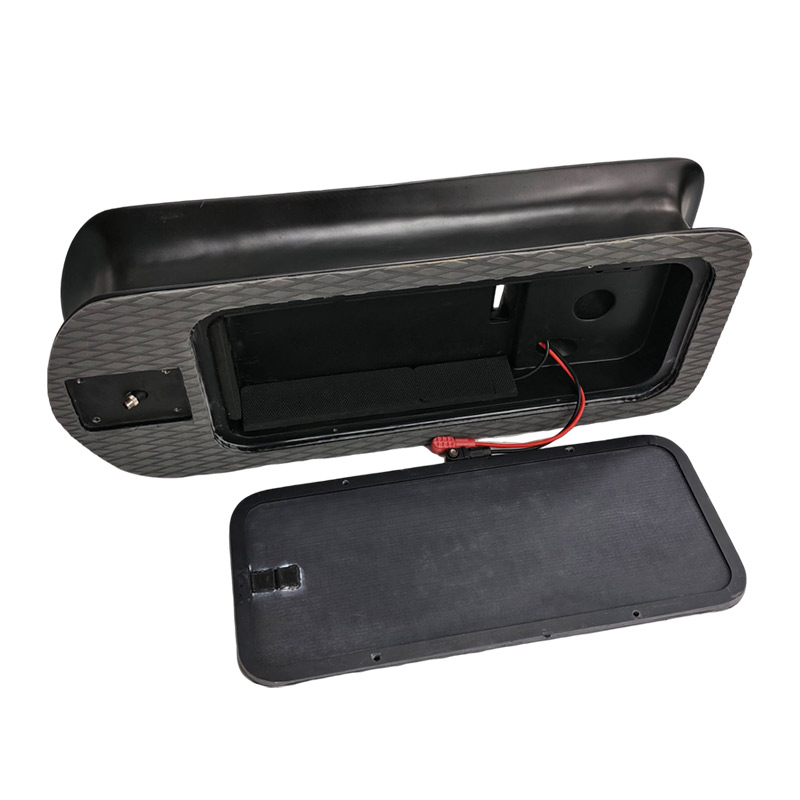Wake surfing and wake foiling are two exhilarating water sports that offer unique experiences behind a boat. While both involve harnessing the energy of the boat’s wake, they differ significantly in technique, equipment, and versatility. In this article, we’ll dive into the similarities and differences between these two popular activities, helping you understand how they compare and which one might be the right fit for you.
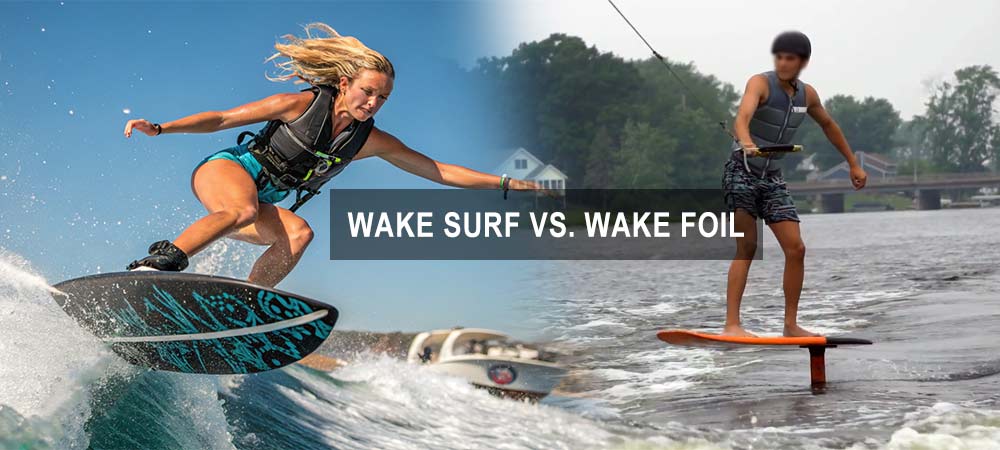
1. Where Can You Ride?
The riding zones for wake surfing and wake foiling differ greatly:
Wake Surfer:
As a wake surfer, you’re mostly limited to the first wake created directly behind the boat. In rare cases, a longboard or paddleboard might allow you to ride the second wake, but this is uncommon. The first wake is your primary playground, and you need a good, clean wake to ride without relying on the rope.
Wake Foiler:
With a hydrofoil, the possibilities are virtually endless. You can ride the first, second, or even the third wake. Advanced riders have been known to ride as far back as ten wakes behind a wakeboard boat! Additionally, once you master pumping on flat water, you can explore the area behind the boat with more freedom, jumping between wakes and riding on either side. Unlike wake surfing, foiling turns the entire area behind the boat into an expansive playground.
2. Who Can Do It?
Both sports are accessible, but they vary in terms of difficulty:
The Difficult of Wakesurf:
This is a great entry-level water sport. If you can wake surf, you already have a solid foundation for other board sports. Wake surfing requires less technical skill, making it easier to pick up for beginners with limited water sports experience.
Wakesurf Foiling:
Wake foiling is slightly more challenging. It requires more balance and control, especially due to the additional lift provided by the foil. However, if you have experience with other water sports, you can pick it up with some practice. With persistence and determination, most riders can get the hang of wake foiling relatively quickly.
3. Getting Up on the Board
No matter what kind of waterplay surfing sport, getting up on the board is basic for them. While the process of getting up is similar for both sports, there’s a key difference:
Get Up On Your Wakeboard:
Getting up on a wake surfer is straightforward. You position the board at your feet, point your hips toward the boat, and pull yourself up as the boat accelerates.
The steps to get up on the baord
- Position Yourself in the Water:
Start by lying on your back in the water with your heels resting on the board and the board floating perpendicular to the boat. Hold the rope handle with both hands, keeping your knees bent close to your chest. - Signal the Boat Driver:
Give a clear signal to the driver when you’re ready to start. - Let the Boat Do the Work:
As the boat accelerates slowly, allow the tension in the rope to pull you forward. Resist the urge to stand up immediately. - Pop Up Slowly:
Once the board begins to rise under your feet, gradually stand up by straightening your legs. Keep your knees bent and your weight centered over the board. - Find Your Balance:
Shift your weight slightly to your front foot and keep your chest up. Use your back foot to steer the board into the wake. Once balanced, toss the rope back to the boat and surf freely.
Get On Wakefoil Board:
The process starts the same, but you need to apply significant pressure to your front foot to counteract the foil’s lift. Without this adjustment, the foil will lift too quickly, causing the board to shoot out of the water. Weight distribution is the critical difference, but the basic steps—setting up the board and positioning your body—remain the same.
How to get on?
- Position Yourself Correctly:
Lay in the water with the foilboard positioned underneath you. Place your feet on the designated foot straps or foot pads, with the board flat on the water’s surface. - Hold the Rope Handle:
Grip the rope handle with both hands, keeping your arms straight and your knees bent close to your chest. - Apply Front Foot Pressure:
Unlike wake surfing, where the weight is more evenly distributed, you need to apply significant pressure on your front foot to counteract the lift from the foil. - Signal the Boat Driver:
Once you’re ready, signal the driver to start. The boat should accelerate smoothly and gradually. - Let the Board Lift Gradually:
As the boat pulls you up, keep your body compact and maintain pressure on the front foot to prevent the foil from rising too quickly. - Stand Up in Stages:
Once the board is stable, slowly stand up, keeping your knees slightly bent for control. Shift your weight carefully to find balance and start flying above the water.

4. Cost of Equipment
The cost of getting started varies between the two sports:
Wakesurf Equipment Cost:
Wake surfing gear is generally less expensive. You can find boards for under $1,000, though premium boards can exceed this price. A quality wake surfboard typically ranges from $300 to $800, with options for different styles such as skim, surf, or hybrid boards. Beginner-friendly boards tend to be more affordable, while high-performance models for advanced riders can be pricier.
However, wake surfing does require access to a wakeboarding boat that can create a strong, clean wake. Wake-specific boats often come with ballast systems to shape the perfect wave, and these boats can cost tens of thousands of dollars, making boat access a significant factor.
Welcome to click the link to see a high-quality carbon fiber wakeboard.
Wake Foiling Device Cost:
Foiling gear tends to be pricier. A complete wake foiling setup, including the board and foil, typically starts around $1,000. However, a major advantage of wake foiling is its versatility—you can foil behind almost any boat, including smaller boats that may not create a significant wake. In contrast, wake surfing requires a high-performance wakeboard boat to generate a surfable wake.
5. Versatility and Fun
When it comes to variety and versatility, wake foiling has the edge:
Wake Surfing:
This sport relies heavily on having a proper wakeboarding boat. Without a clean, strong wake, the experience becomes less enjoyable.
Wake surfing offers a unique blend of relaxation and excitement, making it a favorite for water sports enthusiasts. Its versatility, however, is somewhat limited by the need for a proper wakeboarding boat to create clean, strong wakes. Riders are primarily confined to the first wake, which delivers the most consistent and powerful ride.
Despite this, wake surfing is highly accessible, appealing to all ages and skill levels with its slower speeds and softer falls. The sport also allows room for creativity, with riders progressing from basic carving to spins and even aerial tricks. Beyond the physical challenge, wake surfing shines as a social activity, bringing friends and family together for a shared experience on the water. Its slower pace and proximity to the boat also offer a chance to enjoy the scenery, making wake surfing a relaxing yet thrilling way to connect with nature.
Wake Foiling:
With wake foiling, you can ride behind various boats, including smaller ones that might not produce a large wake. Once you master the basics, you can explore more wakes, experiment with pumping on flat water, and unlock new possibilities.
Wake foiling redefines versatility and fun on the water, offering unparalleled freedom compared to traditional wake sports. Unlike wake surfing, which relies on the first wake and a specialized wakeboarding boat, wake foiling opens up a world of possibilities. With the hydrofoil lifting the board above the water, riders can glide effortlessly across multiple wakes, even beyond the third or fourth roller, and explore both sides of the wake. This adaptability allows foilers to enjoy the sport behind a variety of boats, not just wakeboard models, making it more accessible.
The foil’s ability to maintain lift even in smaller wakes or flat water enables riders to continue pumping and moving freely, turning the entire water surface into a playground. Whether you’re hopping wakes, carving smooth lines, or experimenting with tricks, wake foiling offers a unique, dynamic challenge. It also caters to riders seeking progression, as mastering balance, weight distribution, and pumping opens up new levels of control and creativity. Wake foiling combines the thrill of flying above the water with the versatility to adapt to different conditions, making it an exciting choice for adventurers seeking more than just a ride.
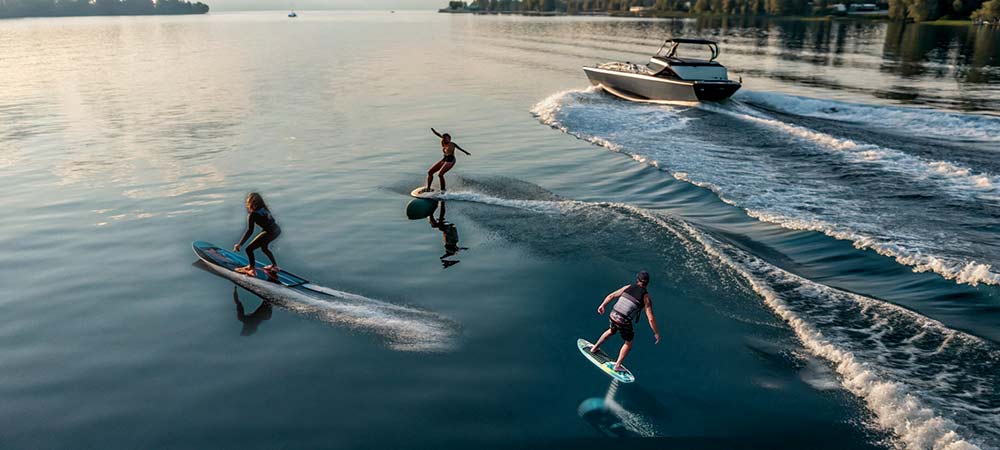
6. Which Sport Is Right for You?
Both wake surfing and wake foiling offer incredible experiences on the water.
Wake surfing is ideal for beginners or those looking for a simpler, more accessible way to enjoy riding behind a boat. It’s a great option for a relaxing day on the water with friends.
Wake foiling, on the other hand, is perfect for adventurers seeking a more dynamic and versatile sport. While it takes more time to learn, the payoff is the ability to explore more wakes and enjoy the freedom of movement.
Ultimately, both sports are about having fun and shredding on the water. Whether you choose to wake surf or wake foil, you’re guaranteed an unforgettable experience.
Happy shredding! If you have any questions about wake foiling or want to learn more, feel free to contact us. See you out there! If you need us to help produce the wake foilboard or wake hydrofoil, please contact us without any hesitation.




